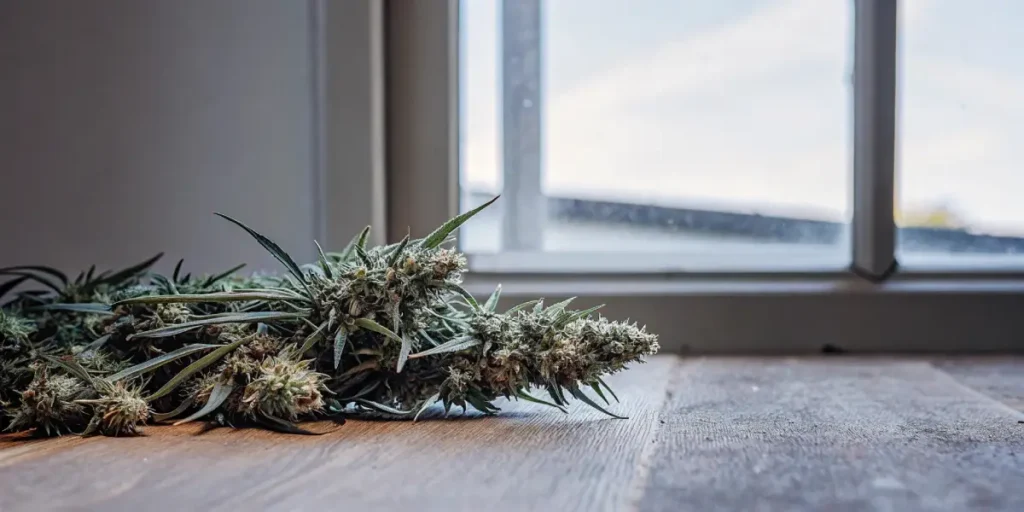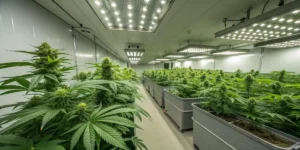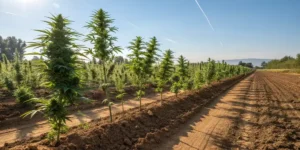Harvest time is crucial for cannabis growers. It’s the moment when the fruits of your labor are realized. However, knowing exactly when to cut the plants can be tricky. One common question among cultivators is: Do trichomes mature after harvest? This topic has sparked quite a bit of debate within the growing community.
Marijuana trichomes are those tiny, glistening crystals that cover the buds and leaves of cannabis plants. They hold much of the plant’s cannabinoids and terpenes, which are responsible for the effects and flavors of your cannabis. But what happens to trichomes once the plant is cut?
Some believe trichomes continue to ripen after harvest. Others argue they begin to degrade immediately. Let’s take a closer look at trichome development post-harvest and what changes occur after the plant is cut.
Trichome Maturation Process After Harvesting
When you cut your cannabis plant, the trichomes don’t exactly stop in their tracks. While they don’t mature in the same way as they do on the living plant, changes in trichomes after plant cutting can still occur. The key is understanding these changes to maximize the potency and flavor of your harvest.
Once harvested, the plant’s trichomes begin to dry and eventually degrade. This degradation can affect the quality of your cannabis. However, when properly dried and cured, some believe these trichomes can continue to develop slightly, enhancing the overall experience.
Do trichomes mature after harvest? The answer is not straightforward. While the trichome maturation process after harvesting doesn’t lead to dramatic changes, subtle shifts can still improve the cannabis’s overall profile. This emphasizes the importance of handling your harvest with care.
Knowing the trichome development post-harvest is essential for growers aiming for premium quality. The process involves maintaining the delicate balance between preserving existing trichomes and allowing them to evolve slightly during drying and curing.
Effect of Harvest Time on Trichome Maturity
Harvesting at the right time is crucial for the trichome maturation process. Waiting too long or cutting too early can significantly affect the potency and flavor of your cannabis. The effect of harvest time on trichome maturity cannot be overstated.
As a rule of thumb, growers often look for trichomes that are mostly milky white with some turning amber. This indicates peak maturity. However, depending on the strain and desired effects, you might want to harvest when trichomes are mostly cloudy or have more amber tones.
Timing your harvest to coincide with peak trichome maturity can elevate the effects and quality of your final product. Each strain has its own sweet spot for trichome color, and recognizing this is key to achieving the desired results.
The correlation between harvest timing and trichome development post-harvest highlights the meticulous nature of cannabis cultivation. Growers must stay vigilant, monitoring plant conditions closely to make informed decisions about when to harvest.
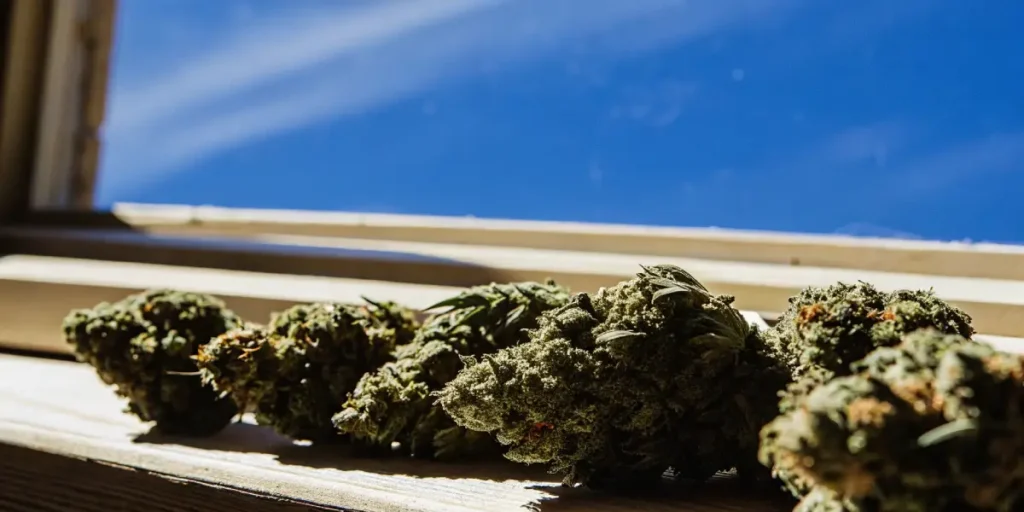
Real-Life Examples and Practical Tips
Let’s consider a few strains from Global Green Genetics to illustrate. For instance, ‘Northern Lights‘ is a popular choice among growers. This strain benefits from being harvested when trichomes are mostly cloudy, offering a balanced high.
On the other hand, ‘Blue Dream‘ might be harvested slightly earlier to preserve its uplifting and energetic effects. This strain tends to develop amber trichomes quickly, so watch closely.
For growers exploring new strains, knowing the effect of harvest time on trichome maturity can guide harvesting strategies. By observing how different strains react to timing, growers can refine their methods and improve future yields.
Practical experience combined with knowledge of trichome maturation process after harvesting empowers growers to make better choices. As each strain presents unique challenges, adapting to these variations ensures a successful harvest.
Drying and Curing: Their Impact on Trichomes
Drying and curing are crucial steps post-harvest. They can significantly affect how trichomes mature. Proper drying helps preserve the integrity of the trichomes, while curing allows for the slight development and enhancement of flavor.
During drying, it’s essential to maintain a controlled environment. Too much heat or humidity can cause trichomes to degrade prematurely. Aim for a cool, dark space with good air circulation to ensure your trichomes stay intact.
The drying phase is where changes in trichomes after plant cutting become most apparent. By carefully controlling environmental factors, growers can prevent unwanted degradation and maintain the potency of their harvest.
Curing, on the other hand, offers a chance for subtle improvements. As the cannabis sits in airtight containers, the trichome maturation process after harvesting continues at a slow pace, enriching the aroma and flavor of the final product.
Common Misconceptions About Trichome Maturity
Some growers mistakenly believe that trichomes will continue to mature significantly after harvest. While minor changes can occur, dramatic shifts in potency are unlikely. Knowing the limits of trichome development post-harvest can prevent disappointment.
Another common misconception is that drying and curing can fix poorly harvested cannabis. While they can enhance the product, they cannot completely reverse the effects of an ill-timed harvest. Timing is key.
A frequent misunderstanding is thinking that trichomes continue to ripen after harvest in the same manner as before cutting. This belief can lead growers to overlook the importance of precise harvest timing and proper post-harvest care.
Clarifying these misconceptions helps growers focus on what’s truly impactful: observing trichome color and characteristics and adjusting their practices to optimize the quality of their cannabis.
- Monitor trichome color closely as harvest approaches.
- Choose harvest timing based on desired effects and strain characteristics.
- Ensure proper drying and curing to preserve trichome quality.
- Understand that minor trichome changes can occur post-harvest, but major maturation is limited.
- Be aware of common misconceptions and avoid them for optimal outcomes.
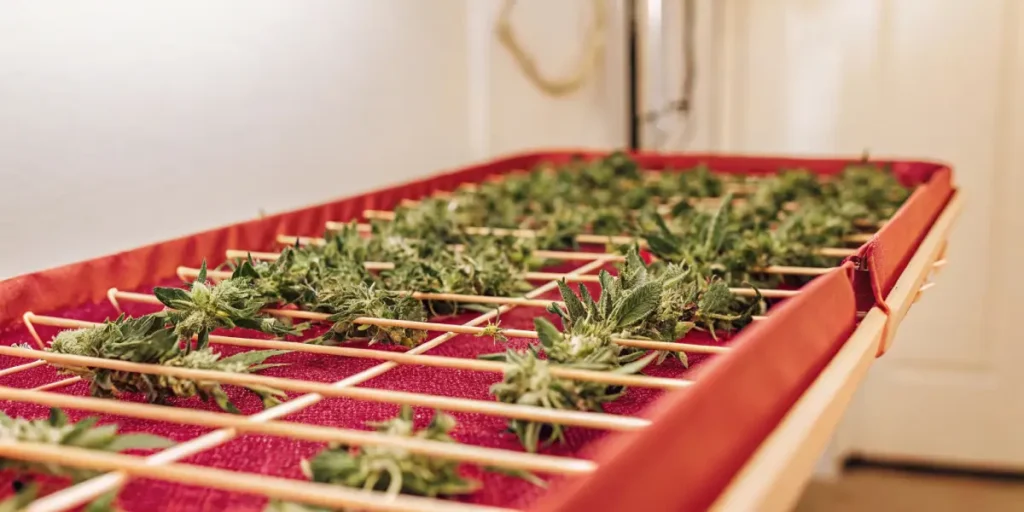
FAQs
Do trichomes continue to ripen after harvest?
Trichomes do not continue to ripen in the same way once the plant is cut. However, drying and curing can allow for slight enhancements in flavor and potency. It’s about maintaining the quality rather than expecting significant maturation.
While some changes can occur, expecting major ripening post-harvest can lead to disappointment. It’s crucial to harvest at the right time to ensure that trichomes are at their peak before cutting the plant.
Understanding that trichome development post-harvest is limited can help set realistic expectations for growers. Focusing on the factors you can control, such as drying and curing, will yield the best results.
Do trichomes mature after harvest in a notable way? Not quite. But with diligent post-harvest care, growers can still enhance the overall quality and experience of their cannabis.
What impacts trichome development post-harvest?
The drying and curing process plays a significant role in the condition of trichomes after harvest. Proper drying prevents premature degradation, while curing enhances the product’s overall quality.
Environmental factors such as temperature, humidity, and light exposure also impact trichome preservation. Keeping these elements in check ensures the best results from your harvest.
Managing these variables effectively can determine the success of the trichome maturation process after harvesting. By creating optimal conditions, growers can preserve the potency and richness of their cannabis.
Do trichomes continue to ripen after harvest? Not significantly, but the choices made during drying and curing can influence the final outcome, allowing for a more refined product.
How does the effect of harvest time on trichome maturity matter?
Harvest time significantly affects the potency and profile of your cannabis. Harvesting when trichomes are at their peak ensures the best quality. Too early or too late, and the effects may not align with your expectations.
Knowing your strain and desired effects guides you in deciding the perfect harvest time. For example, ‘Northern Lights’ might be best harvested when trichomes are milky, while ‘OG Kush‘ benefits from more amber tones.
The effect of harvest time on trichome maturity is a critical consideration for achieving the desired characteristics of your cannabis. Each strain’s unique profile necessitates careful observation and timing.
By knowing these dynamics, growers can better align their practices with the natural development of trichomes, ensuring a successful and satisfying harvest.
Can changes in trichomes after plant cutting be controlled?
While you cannot control trichome maturation post-harvest, you can influence the quality through proper drying and curing. This process helps preserve the trichomes’ integrity and enhances the final product.
By maintaining a controlled environment and handling your cannabis with care, you can ensure that the trichomes remain as potent and flavorful as possible.
Changes in trichomes after plant cutting are inevitable, but thoughtful post-harvest management can mitigate potential degradation and support a more refined outcome.
Through careful monitoring and adjustment, growers can protect their harvest from adverse conditions, preserving the integrity and appeal of their cannabis.
Why is trichome maturation process after harvesting a concern?
Trichome maturity directly impacts the potency, flavor, and overall experience of cannabis. Knowing how to maintain trichome quality after harvesting is essential for achieving the best results.
For growers, especially those new to the craft, knowing what to expect in terms of trichome changes can help guide better practices and lead to more satisfying harvests.
The trichome maturation process after harvesting is a focal point for growers who aim to produce high-quality cannabis. By understanding the nuances of this process, they can enhance the final product.
Addressing this concern ensures that growers can maximize the potential of their harvest, delivering a product that meets both personal and market expectations.

